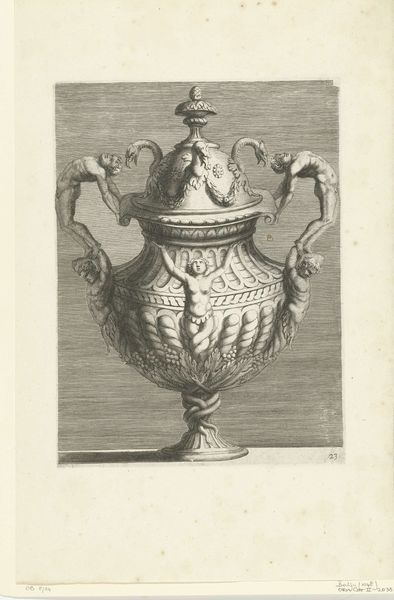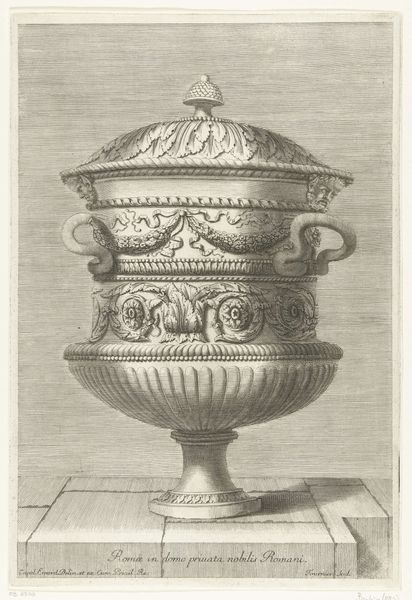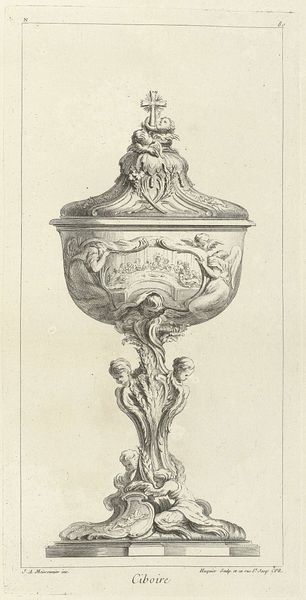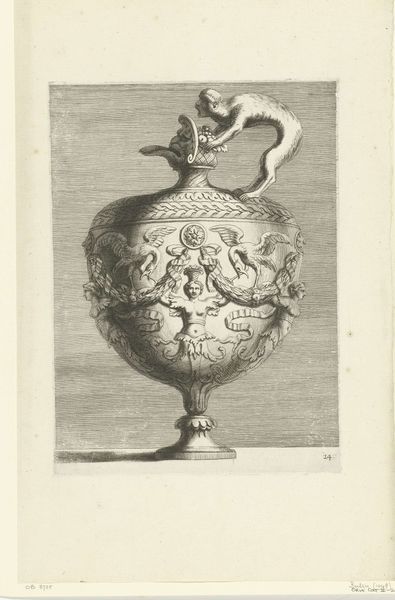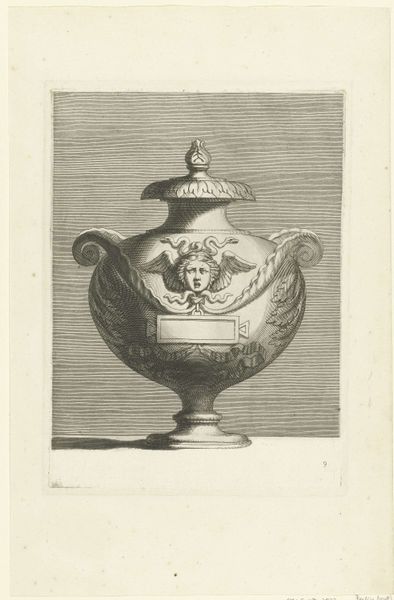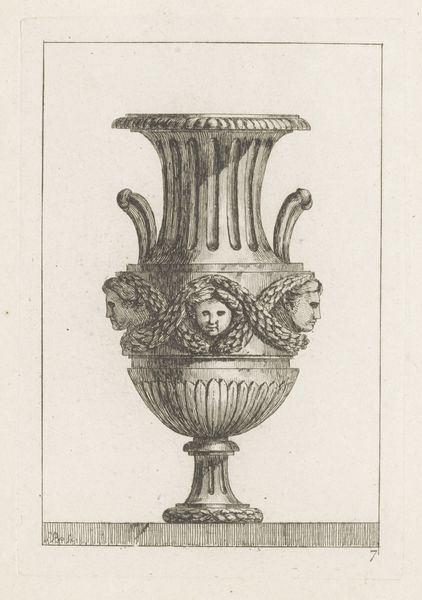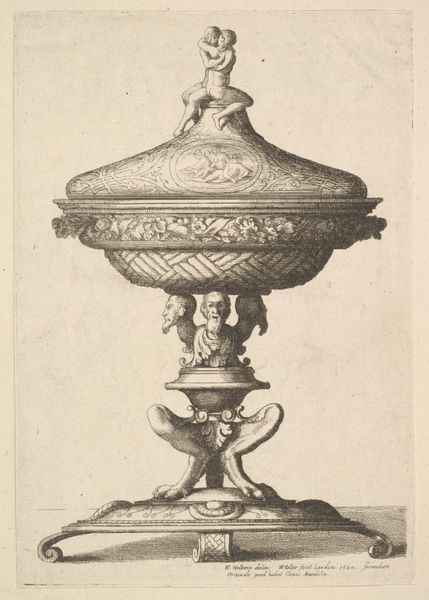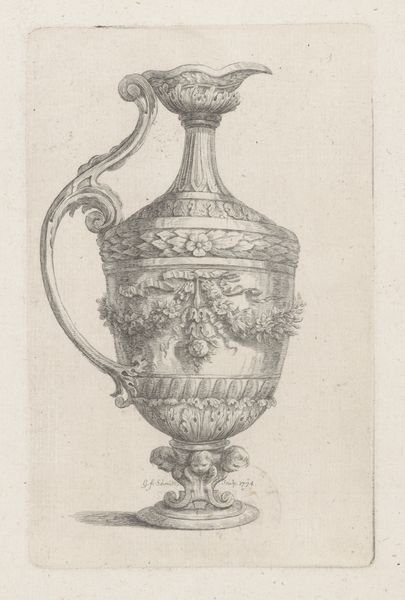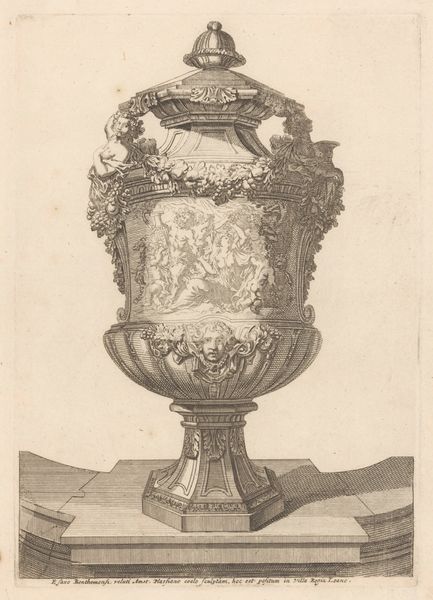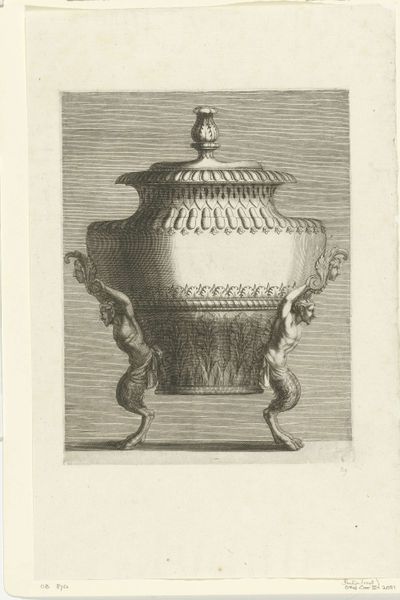
drawing, print, engraving
#
drawing
#
baroque
# print
#
old engraving style
#
form
#
line
#
decorative-art
#
engraving
Dimensions: height 315 mm, width 190 mm
Copyright: Rijks Museum: Open Domain
Curator: At first glance, I feel a strong sense of balance in this engraving. It’s very ornate, but pleasing to the eye, in some indefinable way. Editor: This engraving, entitled "Vaas met deksel," which translates to Vase with Lid, comes from the Rijksmuseum collection and is attributed to Nicolas Robert, dating from before 1703. It showcases the linear elegance of Baroque decorative arts. Let's dive into what might contribute to that sense of balance you observed. Curator: Well, I am immediately drawn to the symmetrical arrangement. The cherubs and decorative swags, mirrored on either side, give a feeling of order. I'd love to be in the presence of this vase—there are such subtle textures to consider! Editor: Absolutely. That symmetry, a key feature of Baroque design, speaks volumes. We see the influences of classical ideals about harmony but intertwined with this is a very confident display of wealth and power. Do you see the implied narratives embedded within those choices? Curator: Mmm, yes, and I feel I must add to my initial thoughts on "balance": perhaps it has an illusory quality. When looking closer, there is tension—those grasping, curled forms of the lion handles against the innocent play of cherubs. One is predatory and the other innocent—a subtle reflection on social hierarchy perhaps? Editor: Indeed, the ornamental style presents inherent tensions. This form speaks to broader conversations around societal structures. What's particularly striking is how an engraving—typically reproducible— immortalizes a unique object, embedding it in a network of signs and symbols accessible for both artistic and political interpretation. Curator: A flat, linear work about a physical, three-dimensional, functional object. It is quite thought-provoking. Before viewing it through a theoretical lens, it never would have occurred to me how complex this simple design might be! Editor: Yes, viewing art provides opportunities for personal insight that intertwine with historical context. It enriches understanding, bridging past and present to help build toward a future where design promotes balance, harmony, and equitable consideration.
Comments
No comments
Be the first to comment and join the conversation on the ultimate creative platform.
